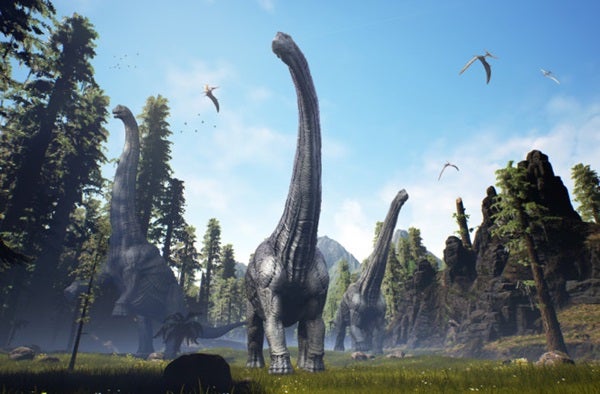In the Northern Hemisphere, seasonal flowers had just started blossoming, trees were budding and fish had begun to forage. It was early spring in the Cretaceous, 66 million years ago, moments before a seven-mile-wide asteroid would hit the Yucatan with blustering force. A few hours later, most life within 3,000 miles would be dead, killed by debris, burned alive or poisoned.
“It sounds harsh but if you were outside, and not underground or under water, you were dead,” says Melanie During, a researcher who studies the dinosaur’s demise at Uppsala University in Sweden.
Using paddlefish and sturgeon fossils found in modern North Dakota, During showed that the asteroid hit Earth in early spring, in recent study published in Nature. The catastrophe came just when animals were hatching and vegetation was blooming, instantly killing the next generation. And those that didn’t die initially, would soon fall under the weight of famine.
“At this point the food chain collapses and everything that survives the first blow of the asteroid gets hungry,” During says.
Earth was in the wrong place, at the wrong time
During’s team used growth patterns, similar to rings on trees, to discern where the fish were in their lifecycle at the time of their untimely death. The team used powerful x-rays to look at the bone growth and number of bone cells to see if the fish were eating.
Both species do most of their foraging in spring and summer, but had not yet reached their peak summer size. Debris found in the gills of the fish showed that they likely died as a result of a continent-sized typhoon around an hour after the mighty Chicxulub asteroid barreled into Earth.
The location of the impact, an area where the ground is made of sulfate-heavy gypsum, caused toxic gases to spew into the atmosphere, quickly poisoning the entire planet. During says that if the asteroid hit eight minutes earlier or later, it would have hit the Atlantic or Pacific Ocean because of the rotation of the planet. The clay ocean floor would have therefore been much less reactive. But thanks to the sulphur, three-quarters of Earth’s creatures — including dinosaurs, pterosaurs, and both flying and marine reptiles — would quickly go extinct.
After the initial death and destruction, atmospheric sulphur caused a thirty year cooling period. Most of the species that survived would have taken some kind of shelter. This is true of turtles and crocodiles, which both lived beyond the Cretaceous.
It’s also true that many of the lineages of both species survived in the Southern Hemisphere, says During, where it was already fall and they were likely sheltering for winter. Both could have lived underground during the “nuclear winter” that befell the skies above.
“I don’t think that this is a coincidence,” she says.
The Earth was the victim of numerous “wrong-place-wrong-time” elements that made the disaster more deadly, says Natalia Jagielska, a paleontologist at the University of Edinburgh who was not involved in the study.
“The scale of the destructiveness of the asteroid was accentuated and this research adds to this, posing the unfortunate timing of the collision — affecting the productive mating and hatching season in the Northern hemisphere — which had a disastrous knock-on effect in future,” she says.
We’ve only begun to understand the selectivity of Earth’s greatest natural disaster. Why did dinosaurs die out and mammals start anew, for example? This research tells us a lot about the unfortunate disaster that obliterated 76 percent of all life on the planet. It wasn’t pretty, but it’s left scientists like During captivated to find out more.
We can tell from the ill-fated fish that the end was indeed ghastly, says Jagielska. “Impact spherules locked in the gills of the animal makes it even more fantastic, albeit gruesome. We’re looking at history frozen in stone,” she says.










